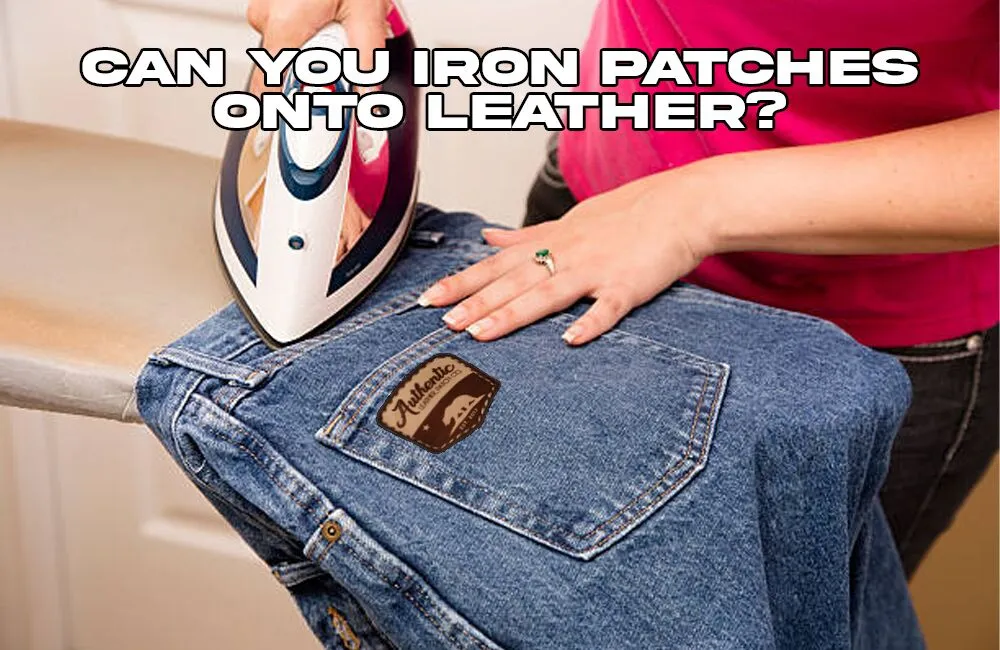In the ever-evolving world of fashion, personalization is key. Transforming a simple leather jacket into a unique masterpiece with custom leather patches for jackets is a trend that has gained significant popularity. Ironing patches onto leather is a creative and accessible way to add flair to your wardrobe. In many cases, it is possible to iron patches on leather. However, it requires more care if you are crucial to approach this process, like choosing the right patch, checking leather suitability, cleaning the leather surface, positioning the patch, protecting the leather from burning, and all the processes. In this blog, we’ll guide you through the step-by-step process of ironing patches onto leather, unlocking a world of stylish possibilities.
1. Choosing the Right Patch:
Ironing on leather patches starts with this process, i.e. Choosing the right custom patch. Not all leather patches are created equal. Ensure the patch you select explicitly states compatibility with leather. Leather-friendly patches are designed to withstand the heat required for ironing without compromising their integrity.
2. Checking Leather Suitability:
Leather comes in various thicknesses and textures. Before embarking on the ironing journey, test a small, inconspicuous area to ensure the leather can withstand the heat without discoloration or warping. At Neat Custom Patches we are professional in making custom leather patches that can withstand ironing. Get a free quote now and get the premium quality leather patches to expose your luxury at cheap prices.
3. Cleaning the Leather Surface:
A clean canvas ensures optimal adhesion. Wipe the area of the leather where you plan to attach the patch with a clean, damp cloth, removing any dust, dirt, or oils.
4. Positioning the Patch:
Carefully position the patch on the desired spot. Precision matters, as repositioning after ironing can be challenging.
5. Protecting the Leather:
Place a thin cotton or linen fabric over the patch to act as a protective barrier. This prevents direct contact between the iron and the leather, safeguarding it from potential damage.
6. Setting the Iron:
Set your iron to a low to medium heat setting. Avoid using the steam function, as excess moisture can be detrimental to leather.
7. Ironing Process:
Gently press the iron over the protective fabric, ensuring it covers the entire patch. Apply even pressure and move the iron in circular motions for about 10-15 seconds. Monitor the patch to check if it adheres properly.
8. Cooling Period:
Allow the patch and the leather to cool completely before handling. This crucial step ensures the patch adheres securely and prevents premature lifting.
9. Testing Adhesion:
After cooling, gently try to lift the edges of the patch. If it lifts easily, consider repeating the ironing process. A securely attached patch is key to longevity.
10. Consider Sewing for Extra Security:
While iron-on patches can provide a stylish touch, consider reinforcing the attachment by sewing the edges of the patch onto the leather. This step enhances durability and ensures a more secure application.
Ironing patches onto leather is a versatile method of customization, but attention to detail is paramount. Always follow the instructions provided with the patches and exercise caution to preserve the integrity of both the leather and the patch. For those seeking a perfect blend of style and durability, a judicious combination of ironing and sewing is the key to a truly unique and long-lasting customized leather piece.
Personalize, experiment, and let your creativity shine through the patches that adorn your leather garments. With the right approach, you’ll not only be making a fashion statement but crafting a unique narrative through your customized, one-of-a-kind wardrobe. Get a free quote now to get high-quality durable custom leather patches for your outfits whether they are jeans, hoodies, vests, or anything. We are professional in making all the patches under the sun.

